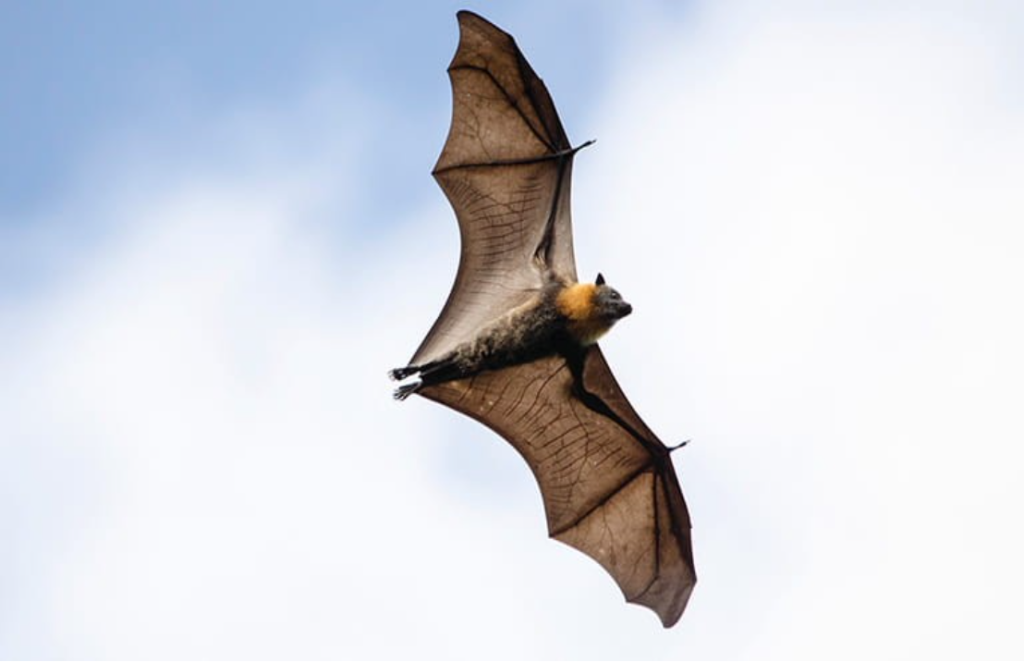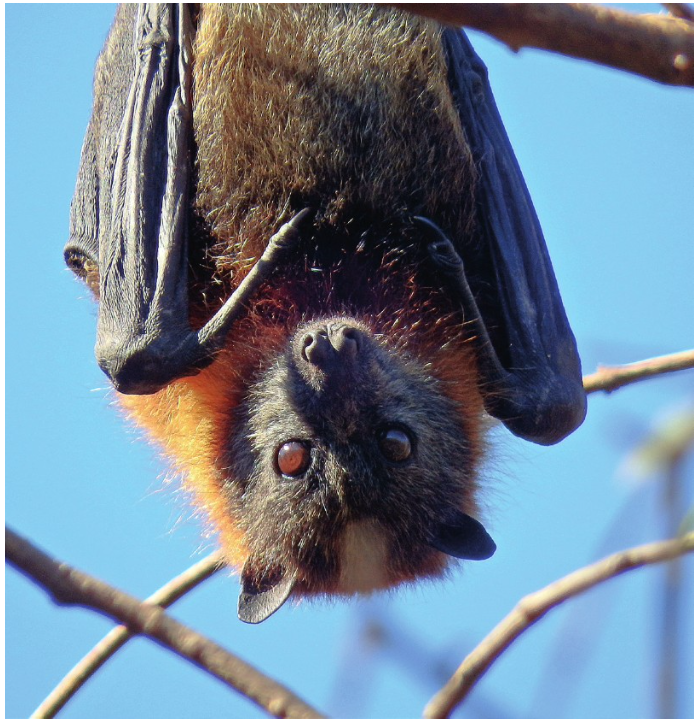Summary of the talk at the March Sutherland Group meeting given by Matthew Mo and Libby Timmis from NSW Department of Planning and Environment.
As we know, Flying Foxes can cause some headaches for us poor, easily-upset humans. They provide an excellent ecological service through pollination and seed dispersal and are a vital keystone species. However, they tend to set-up shop in highly urbanised areas which can cause problems for residents and school children, mainly due to noise and odour produced by colonies. (The last time I bought a car, the car dealership told me that flying fox poo would completely destroy my car! Hmmmm….).
There are four flying-fox species in Australia: The Little Red, The Black, The Spectacled and The Grey- Headed. Three of these are listed as threatened in the wild (The Black is not currently listed). We only see three of these in NSW; the Spectacled lives in Tropical Australia.
Flying Foxes group together in camps referred to as ‘roosts’ and the numbers of individuals per site can vary enormously. The main lifecycle progression is: birthing in spring, lactation in summer, conception in Autumn to winter and gestation through winter.

Their main diet is flower-nectar and fleshy fruits of a wide variety of tree species. They actually chew fruit and then spit it out as they do not digest fibre well. This likely aids germination of some native species. They are known to move their roosts in time with large flowering events of particular plants. In a previous talk that we received on flying foxes, we were told that they are the main pollinator of white-flowered eucalypts (which is pretty much most of them in NSW) and they will travel 10s of kilometres each night through the eucalypt canopy. This large spread of genetic material is incredibly important.
The most common roosts we see in Sydney are those of the Grey-Headed Flying Fox (listed as vulnerable). I used to spend time in the roost on Cabramatta Creek, adjacent to Warwick Farm Racecourse on the Hume Highway, when I was a kid. We thought it was a ‘haunted and magical’ place to hang out.
Matthew and Libby work very closely with researchers and are well-versed in published scientific studies regarding flying foxes. In one land use study, it was found that 66% of roosts were established in urban areas, 20% in cleared / non-native vegetation and 14% in good quality native vegetation. General observations have been made by many that flying foxes love to establish in a good old botanic garden or camellia patch perhaps. Reasons for this are likely due to the wide variety of exotic, non-local native and native plants that are available. Artificial night light also creates easier navigation. And Flying Foxes learn where the best and easiest food is. Hence, urban areas, as a breeding and foraging ground, make a lot of sense.
At least 13 roosts are known in the wider southern Sydney area, from Thirroul and Campbelltown to Centennial Park. We have around 4 alone in Sutherland Shire.
Matthew and Libby are involved in management and education on flying foxes. This includes community education at a variety of levels; listening and responding to concerns and complaints; including the community in strategies to deal with flying foxes; and providing subsidies to help people manage flying foxes where they are causing an issue. They have a 3-tiered policy when dealing with flying foxes. 1. Routine management. 2. Create buffers between flying foxes and residents or development. 3. Implement dispersal.
Management works can include habitat restoration, grounds-keeping and cleaning up the groundlayer. In some cases, tree removal may be undertaken to move flying foxes further away from houses and schools. Tree and weed removal may also be undertaken to try to persuade flying foxes to move. Habitat restoration might be undertaken in an area further away from houses, to encourage individuals to ‘keep moving over’. Flying foxes may have particular preferences for particular vegetation structure which might include a ‘canopy only’ structure or vegetation comprised of a variety of strata.
In one particular case, residents were complaining profusely about the noise and odour of a neighbouring flying fox roost. It was found, when double glazing was installed on the windows of the houses, the complaints dropped enormously.
The most undesirable strategy is where flying foxes have to be deterred or moved on. What many residents do not realise, is that strategies such as noise-deterrents must be implemented at 4:00 in the morning, in order to get flying foxes to abandon a roost. This creates a lot of extra noise. Other strategies include intermittent spraying of water and noises through the day. From scientific research (some of which is in the Australian Journal of Zoology), where dispersal was actioned, 77% of flying foxes eventually returned to that roosting site. Another study showed that where flying foxes were deterred and forced to move, 88% of new roosting sites ended up being in a worse spot than before, in terms of human-interaction.
Flying Foxes can cause enormous headaches for those in the agriculture industry growing fruit trees. Matthew’s Team provides funds for appropriate fruit netting. Fruit-tree netting has been a huge problem in the past, with the apertures of the netting being too large. Hence, flying foxes get caught and die. NSW now has a promotional strategy called “Net it right, get it right”, which promotes and advocates the correct netting to use, with very small apertures. The weblink is here: https://www.environment.nsw.gov.au/news/net-it-right
Flying foxes are also killed by electrocution (which is some cases, pups can survive), as well as barbed-wire fences. In a natural sense, of course, the odd Powerful Owl may knock one off as well.
Flying Foxes are severely affected by extreme heat and I used to observe this as a kid at Warwick Farm. Days of over 36°C are generally too hot for flying foxes and at 42°C, there will likely be mass death. In the extreme summer of 2019-2020, around 72,000 flying foxes died at 40 roosts in NSW. Therefore, we have to consider what climate change may bring for these species. Flying foxes try to cool down by getting lower in the canopy and midstorey. However, most deaths were likely due to inappropriate vegetation structure at the roosts.
Matthew and Libby have considered sprinkler systems and hosing of roosts. However, it is not known how this might affect humidity and any young that may be present.
Volunteers are able to assist with monitoring and counts when they are planned. Drones are also more frequently used to count flying foxes at roosts.
Question time included general comments and observations. A flying fox can live to 18 years of age!
Our gardens can support flying foxes by retaining eucalypt trees and planting fleshy-fruited native-tree species.

